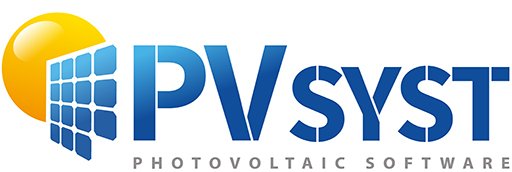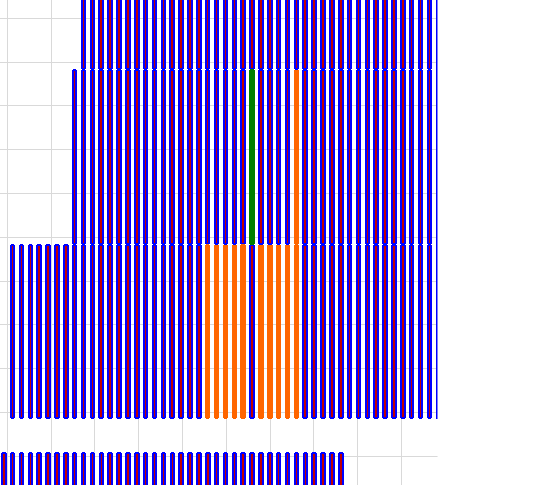
Debbie
-
Posts
20 -
Joined
-
Last visited
Posts posted by Debbie
-
-
Hello PVsyst team,
I'm trying to import a DAE file with a very large number of tables. There are about 22,000. So far it has been running without result for 15 minutes on the import step.
Is there a maximum number? I'm wondering if I'll need to break up the array, and if so, into how many sections. Both for import, and also for running the shade scene. Also, is one format better than the other in this case...DAE or 3DS?
This is to attempt to model Nextracker XTR...I know I can't get string mismatch, but I'm trying to see the row to row shade impacts. Not using TrueCapture.
Thank you!
-Debbie
-
If I select the "custom tracker" option, shouldn't that prevent it from using all the trackers in the calculation, regardless of the advanced parameters? (currently at 40 for mine). I will see if it happens again, now that I'm running a new model, and will report back.
-
Hi PVsyst team,
In version 7.3.4 I am finding that computing the integrals for diffuse is taking about 6 minutes each time I run the model again (even if I don't change the near shading scene). Usually this doesn't happen when I set the reference diffuse tracker to a custom selected tracker. Is this a change in the new version?
Thank you,
Debbie
-
Thank you, I had to modify the inverter file, it was limited to only unity power factor. I was not expecting that when using this new inverter file.
-
Hi PVsyst team,
In version 7.3.4, when I input a non-unity power factor, I am still getting 0 reactive energy in the loss diagram. Is this possibly a bug? Screen captures below taken from the same report.
Also, in this same model, even though I chose a custom reference tracker for the diffuse calculation, it spent a long time (~8 minutes) calculating the diffuse integrals when running the model. I look forward to your response. Thank you.


-
This paper references a pending update to PVsyst that will address sub-hourly clipping. Is there an expected timeline for release of this update?
Thanks very much,
Debbie -
Hi PVsyst team,
I really appreciate the speed of the tracker shading analysis in this version, and the new interface for diffuse shade losses. However, I noticed that sometimes when the central tracker is selected, or I select a custom tracker, it does not automatically select the adjacent trackers for the "shading mask". See screen capture below. I have found that I need to try selecting a few different trackers until I get one where the mask includes trackers on both sides. If I run the model with the selection that does not include shading trackers on both sides, it significantly impacts the results. I'm not sure why this happens. Perhaps it has to do with the tilt of the trackers? These have variable N-S tilts because of terrain. Perhaps if the tilt between adjacent trackers varies too much they don't get selected?
Thank you,
Debbie
(example where the selected tracker did not cause the neighboring trackers to be selected)

-
In V7.3.1 the notes on the report cover seem to be limited to one line. At least for my computer system. Can you check this for the new release?
Thank you!
-Debbie
-
Ah, I had to also redo the shading table calculation after changing the threshold, then after that it triggered the "computing the integrals for diffuse" while running the model. So it does seem to work the same with a non-backtracking array.
-
Does this threshold for partial scene apply differently depending if your model uses backtracking or no backtracking? I am running a First Solar Array with no backtracking. The complex layout, which is very spread out in multiple small sub-arrays, results in reduced shading losses compared to a simple rectangular layout, even when setting this threshold greater than the tracker count. Does a tracking array with no backtracking still make use of a reference tracker for calculations?
-
I upgraded to v 7.2.18, and the same thing is happening to me now with a large shade scene. Every little step or change I make in any of the PVsyst windows (not just near shading) brings up a message "checking variant VC_" which spins for a while. I'm not sure if it has to do with the version change, or a change in my computer processing capacity unrelated to PVsyst.
-
Thank you, I will try the 40 tracker cap modification. What value do you recommend raising it to, for example if I'm modeling a system with 5000 trackers?
-
Thank you, I will try this. Makes sense!
-
Hello, I am able to import a 2D layout from CAD to PVsyst near shading. However, I want to assign alternating East / West tilts to the modules, as in "domes". I am not able to do this because the modules are coming in flat, but all with the same azimuth. The only way to make them tilt in opposite directions is to change the azimuth, which causes them to rotate around their left corner references. Does anyone have suggestions about how to do this?
-
Hi PVsyst team, I am noticing some changes in shading losses as I go through version updates. These are some general observations. Sometimes running the shading the first time generates different results than the second time. Sometimes the values within "irradiance loss" seem to reduce, while the values within "electrical loss" increase. In version 7.2.16, when comparing unlimited sheds (fixed tilt), vs. the same set of inputs in near shadings, the losses are more significantly different than they used to be in earlier versions. I understand you might need specific files to check what is happening. But can you comment generally on whether the shading calculation methods and algorithms are getting updated intentionally with version updates? We now have the capabilities to implement more and more complex shading scenes. Can you comment on how robust the calculations are with complex scenes? Do you have any recommendations for us as modelers to ensure that shading calculations remain accurate even when running complex scenes? Thanks in advance.
-
The detailed near shading scene has some overlapping trackers. I wonder if this is causing an issue that interacts with the version change. Will report back.
-
Thank you, Nils! Is there a general place to access these earlier .exe files, or do we need to request them here on the forum?
-
Has anyone observed changes in global incident irradiance when changing from version 7.2.11 to 7.2.12?
-
Hello, is there any way to revert back to a recent sub-version? For example from V7.2.12 to V7.2.11? I don't see the ability to download these sub-versions from the PVsyst website. Thanks in advance for the help.




Limit to number of tables that can be imported as DAE or 3DS file?
in Shadings and tracking
Posted
Just to share, I was actually able to import it. .3DS format was better. I was able to run it, but it was very slow and hard to work with because it was so flow. I'll be trying with a more powerful computer in the future.